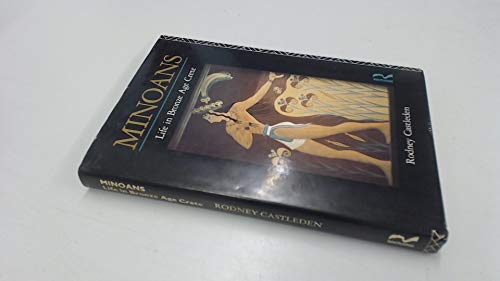
Inhaltsangabe
In the short time that has elapsed since Sir Arthur Evans rediscovered the Minoans in the early 1900s, the people of Bronze Age Crete have become a fixture in European prehistory. We have defined a whole string of cultural traits that make the "Minoan" personality. The Minoans were an elegant and graceful people, lithe and athletic, refined aesthetes who surrounded themselves with sophisticated architecture and beautiful objects. They were nature lovers and lovers of peace: the inhabitants of each city-state living in harmony with their neighbours. With fleets controlling the seas surrounding Crete, they were collectively strong and ruled by a great and powerful King of Knossos called Minos. But how far does the work of subsequence archaeologists in Crete support this widely-held view of Minoans? It is appropriate, as we approach the centenary of Evans' historic excavation, to take stock of the evidence. Rodney Castleden has extended the new interpretation he began in "The Knossos Labyrinth". Embodying the fruits of recent archaeological research, he has produced a new vision of the peoples of Minoan Crete.
Die Inhaltsangabe kann sich auf eine andere Ausgabe dieses Titels beziehen.
Reseña del editor
In the short time that has elapsed since Sir Arthur Evans rediscovered the Minoans in the early 1900s, the people of Bronze Age Crete have become a fixture in European prehistory. We have defined a whole string of cultural traits that make the "Minoan" personality. The Minoans were an elegant and graceful people, lithe and athletic, refined aesthetes who surrounded themselves with sophisticated architecture and beautiful objects. They were nature lovers and lovers of peace: the inhabitants of each city-state living in harmony with their neighbours. With fleets controlling the seas surrounding Crete, they were collectively strong and ruled by a great and powerful King of Knossos called Minos. But how far does the work of subsequence archaeologists in Crete support this widely-held view of Minoans? It is appropriate, as we approach the centenary of Evans' historic excavation, to take stock of the evidence. Rodney Castleden has extended the new interpretation he began in "The Knossos Labyrinth". Embodying the fruits of recent archaeological research, he has produced a new vision of the peoples of Minoan Crete.
„Über diesen Titel“ kann sich auf eine andere Ausgabe dieses Titels beziehen.
Weitere beliebte Ausgaben desselben Titels
Suchergebnisse für Minoans: Life in Bronze Age Crete
MINOANS Life in Bronze Age Crete
Anbieter: Ancient World Books, Toronto, ON, Kanada
Hardcover. Zustand: Very Good. Zustand des Schutzumschlags: No Dust Jacket. Writing in red pen to rear endpaper. Text is clean. ; In this companion to The Knossos Labyrinth (Routledge, 1990) , Castleden gives us an outline of the Minoan culture that, he alleges, is more consistent with recent archaeological evidence: that Knossos was a temple, not a palace, in which occurred not only athletic games and graceful rites, but also human sacrifice and other behaviors pointing to a previously unsuspected dark side to the Minoan personality; and that the Minoan world view and distinctive artistic vision were stimulated by the widespread eating of opium. His revision is not implausible. In early cultures the line between church and state tended to be hazy; so with its architecture. On the other hand, in his zeal to reexamine all traditional theories Castleden frequently proposes scenarios drawn more from psychosocial inference than evidence, yielding arguments less compelling than the originals. A nation of addicts could scarcely have had the energy to execute drug-induced creativity, much less to develop the commercial empire that was ancient Crete under the Minoans. Thought-provoking nonetheless. ; 210 pages. Artikel-Nr. 35307
Gebraucht kaufen
Anzahl: 1 verfügbar
Minoans. Life in Bronze Age Crete.
Anbieter: Scrinium Classical Antiquity, Aalten, Niederlande
Routledge, London / New York, 1990. 210p. ills.(B&W photographs and line drawings, maps and plans). Cloth wrps. 'The book is to be commended as a well-researched and well-argued study of a fascinating but enigmatic people. Castleden misses little of significance in a wide field, and presents his conclusions with clarity and confidence.' (J.V. LUCE in Hermathena, 1991, p. 65). From the library of Prof. Carl Deroux. Artikel-Nr. 47712
Gebraucht kaufen
Anzahl: 1 verfügbar

